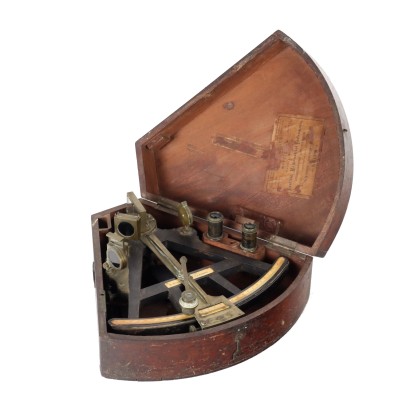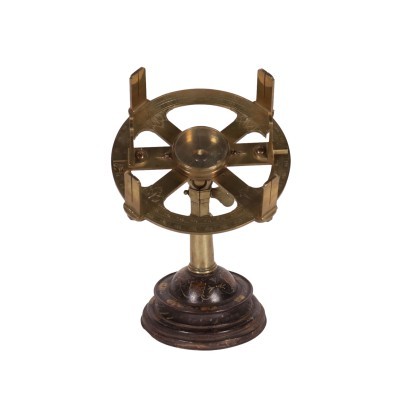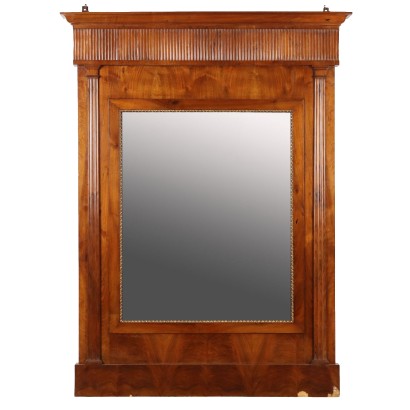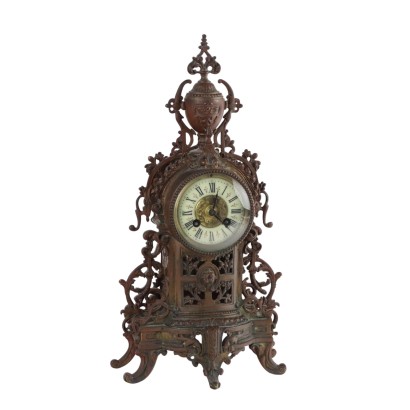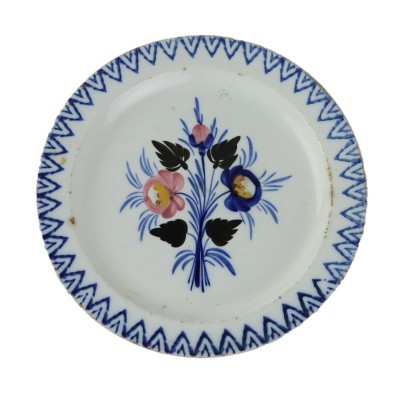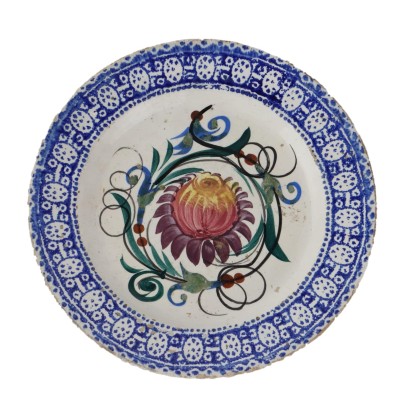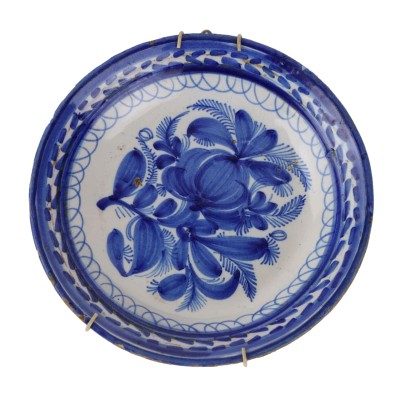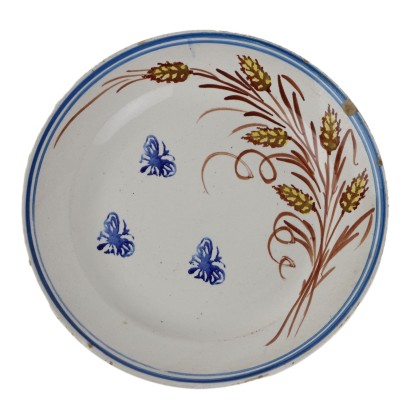D. Filby Sextant Ebony Germany XIX Century - Hamburg 1837 - 1862
Features
Hamburg 1837 - 1862
Age: 19th Century / 1801 - 1900
Origin: Amburgo, Germany
Main essence: Mahogany
Material: Ebony Wood , Brass , Glass , Colored Glass
Description
Sextant "D. Filby Hamburg" in ebonized wood, brass and bone, vernier with adjustment screw, three colored filters for the fixed mirror and four for the mobile one, sighting telescope with optics. Contained in a wooden box in mahogany.
Product Condition:
Object that due to age and wear requires restoration.
Dimensions (cm):
Height: 11
Width: 27,5
Depth: 28
Maximum size (cm):
Height: 12
Width: 32
Depth: 31
Additional Information
Notes historical bibliographic
The company was founded by David Filby in 1837. It deals with nautical literature, nautical charts and nautical instruments imported from Great Britain. It also has a small tool repair shop. In 1862 the company was bought by Carl Plath, a skilled instrument engineer. The activity focuses more and more on the construction of sextants, compasses and barometers.Age: 19th Century / 1801 - 1900
19th Century / 1801 - 1900Main essence: Mahogany
It is one of the most precious and sought-after woods in cabinet making. It was discovered in Central America around 1600 and began to be imported to England in the 1700s. Much appreciated for its hardness and indestructibility, it became widespread following the blocking of walnut exports from France in 1720 and the consequent elimination of English import duties on mahogany from the colonies in America and India. The most valuable version comes from Cuba, but it became very expensive. At the end of the 18th century it began to be used also in France in Louis XVI, Directory and Empire furniture, its diffusion declined starting from when Napoleon, in 1810, forbade its import. It was generally used in the manufacture of elegant furniture, due to its characteristics and beautiful grain.Material:
Ebony Wood
Brass
Glass
Colored Glass
Other customers have searched:
Strumenti scientifici, oggetti musicali, oggetti collezionismo, oggetti di modernariato, oggetti anni '60, oggetti anni '70, oggetti anni '30, oggetti anni '40, oggetti anni '50, oggetti design..
Se ti interessano gli oggetti d'arte e antichi Scopri qui tutte le presentazioni degli oggetti più belli, eleganti e preziosi su FineArt by Di Mano In Mano
Leggi di più
Sull'antiquariato in generale dai un'occhiata anche a:
Classic Monday: da un pezzo dei nostri magazzini alla storia dell'antiquariato
L'antiquariato dalla A alla Z: il Dizionario dell'Antiquariato
Il dizionario dell'antiquariato - Lastronatura
Il dizionario dell'antiquariato - Mascherone
Il dizionario dell'antiquariato - Natura morta
Il dizionario dell'antiquariato - Opificio
Il dizionario dell'antiquariato - Pastiglia
Il dizionario dell'antiquariato - Savonarola
Il dizionario dell'antiquariato - Rosone
Leggi di più
Sull'antiquariato in generale dai un'occhiata anche a:Classic Monday: da un pezzo dei nostri magazzini alla storia dell'antiquariato
L'antiquariato dalla A alla Z: il Dizionario dell'Antiquariato
Il dizionario dell'antiquariato - Lastronatura
Il dizionario dell'antiquariato - Mascherone
Il dizionario dell'antiquariato - Natura morta
Il dizionario dell'antiquariato - Opificio
Il dizionario dell'antiquariato - Pastiglia
Il dizionario dell'antiquariato - Savonarola
Il dizionario dell'antiquariato - Rosone
Product availability
The product can be seen at Milan
Immediate availability
Ready for delivery within 2 working days from ordering the product.



